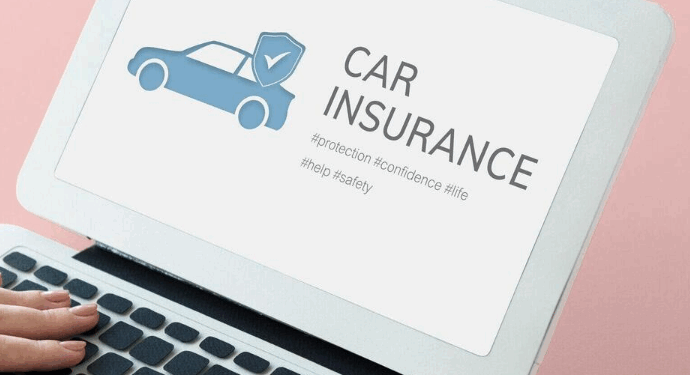Auto Insurance serves as a crucial safeguard for drivers and vehicle owners, providing peace of mind in the face of unforeseen events on the road. This essential coverage not only protects against financial losses resulting from accidents but also ensures compliance with legal requirements across different states. As we delve into the intricacies of auto insurance, we will explore the various types of coverage available, the factors influencing insurance rates, and the importance of understanding policy terms for optimal protection.
Understanding Auto Insurance
Auto insurance is a vital aspect of vehicle ownership that provides financial protection against various risks associated with driving. It is designed to cover potential losses that may arise from accidents, theft, or damage to the vehicle. The purpose of auto insurance extends beyond mere compliance with legal requirements; it safeguards both the driver and the vehicle owner from significant financial burdens resulting from unforeseen circumstances on the road.Different types of auto insurance coverage address various aspects of risk management for drivers and vehicle owners.
Understanding these types is essential to selecting the most suitable policy that meets individual needs and circumstances.
Types of Auto Insurance Coverage
There are several key types of auto insurance coverage that drivers can choose from, each offering distinct protections. Knowing the differences helps in making informed decisions about what is necessary for personal circumstances.
- Liability Coverage: This is mandatory in most states and covers damages to others if you are at fault in an accident. It includes both bodily injury liability and property damage liability.
- Collision Coverage: This type of insurance pays for damages to your own vehicle resulting from a collision with another vehicle or object, regardless of fault.
- Comprehensive Coverage: Comprehensive insurance protects against non-collision-related incidents, such as theft, vandalism, or natural disasters. It covers damages to your car from events outside of your control.
- Personal Injury Protection (PIP): This coverage pays for medical expenses incurred by you and your passengers after an accident, regardless of who was at fault.
- Uninsured/Underinsured Motorist Coverage: This protects you if you are involved in an accident with a driver who either has no insurance or insufficient insurance to cover the damages.
The importance of auto insurance for car owners and drivers cannot be overstated. It serves as a financial safety net that mitigates the impact of accidents and unexpected events. Without adequate coverage, individuals may face substantial out-of-pocket expenses that could lead to financial strain.
“Auto insurance is not just a legal requirement; it is a crucial protection for your financial stability and peace of mind.”
Moreover, auto insurance also plays a role in promoting responsible driving. Many insurers offer discounts for safe driving records and courses, encouraging drivers to adopt safer habits on the road. This not only benefits the insured but also contributes to overall public safety. In summary, understanding the various types of auto insurance coverage and their importance helps drivers make informed choices that protect their assets and ensure compliance with state laws.
Types of Auto Insurance Coverage
Auto insurance policies are designed to protect drivers from financial loss in various situations. Understanding the types of coverage available is essential for selecting the right policy that meets individual needs. This section will explore three primary types of auto insurance coverage: liability coverage, collision coverage, and comprehensive coverage. Each type plays a pivotal role in providing financial security and peace of mind while on the road.
Liability Coverage
Liability coverage is a fundamental component of auto insurance policies, as it protects drivers against claims resulting from injuries and damages to other people or their property. In essence, it serves as a safety net for drivers who may be found legally responsible for an accident.
Bodily Injury Liability (BIL)
This aspect of liability coverage pays for medical expenses, lost wages, and other costs incurred by the injured parties. For instance, if a driver causes an accident that results in another person sustaining serious injuries, the BIL will cover the associated medical bills and compensation for pain and suffering, up to the policy limits.
Property Damage Liability (PDL)
This part covers the cost of repairs to another person’s property damaged in an accident. For example, if a driver accidentally collides with a parked car, the PDL will pay for the repair costs, ensuring that the driver is not held personally accountable for these expenses.Quote:
“Liability coverage is often a legal requirement and provides essential financial protection for drivers.”
Collision Coverage
Collision coverage protects drivers’ vehicles against damage resulting from a collision with another vehicle or object. This coverage is especially useful for those who own newer or higher-value vehicles, as it ensures that repairs or replacements can be financially managed after an accident.
Coverage Scope
Collision coverage will typically pay for the repair costs of the insured vehicle, minus any deductible. For example, if a driver is involved in a crash that damages their car, collision coverage will cover the repair costs after the deductible amount is subtracted.
Situational Examples
This type of coverage applies regardless of who is at fault in the accident. For instance, if a driver collides with a guardrail or hits a tree, their collision coverage will help cover the costs of repairs or replacement, providing a safety net during unexpected events.Quote:
“Collision coverage is essential for drivers seeking to ensure their vehicles are protected against accidents.”
Comprehensive Coverage
Comprehensive coverage is designed to cover damages to a vehicle that are not caused by collisions. This form of insurance provides broader protection, covering a variety of risks that could result in damage or loss.
Coverage Elements
It typically includes damages from theft, vandalism, natural disasters (such as floods or hurricanes), and animal collisions. For example, if a driver’s car is stolen or damaged by hail, comprehensive coverage would cover the repair or replacement costs, depending on the situation.
Additional Considerations
This type of coverage is particularly important for those who live in areas prone to severe weather or high crime rates, as it mitigates the financial impact of such events. Quote:
“Comprehensive coverage serves as a robust protective layer against non-collision-related incidents.”
Factors Influencing Auto Insurance Rates
Auto insurance rates can fluctuate significantly based on various factors. Understanding these factors is essential for consumers looking to manage their insurance costs effectively. Several elements contribute to the calculation of premiums, and being informed about them can lead to better decision-making when selecting coverage.One of the primary factors affecting auto insurance premiums is the driver’s record. Insurers typically review a driver’s history to evaluate risk.
A clean driving record, characterized by no accidents or violations, generally results in lower premiums. Conversely, a history marked by traffic citations, accidents, or claims can lead to higher rates. Insurance providers often employ a points system, where points accumulate for infractions and can impact premiums for several years, reflecting the driver’s risk profile.
Impact of Vehicle Make and Model on Insurance Pricing
The make and model of a vehicle play a significant role in determining insurance costs. Insurance providers assess certain characteristics of the vehicle, including safety ratings, repair costs, and theft rates, to establish premiums. Vehicles that are statistically more likely to be involved in accidents or are expensive to repair often incur higher insurance rates.To illustrate the relationship between vehicle characteristics and insurance pricing, consider the following aspects that insurers evaluate:
- Safety Ratings: Vehicles with high safety ratings typically result in lower insurance premiums. For instance, cars equipped with advanced safety features such as automatic braking or lane-keeping assist are often viewed as less risky, thereby lowering costs.
- Theft Rates: Certain models are more prone to theft, which can lead to increased premiums. For example, luxury vehicles or popular models among car thieves may have higher insurance costs due to a greater risk of theft claims.
- Repair Costs: The expense associated with repairing specific vehicle models influences premiums. If a vehicle has expensive parts or specialized repair requirements, insurers may raise rates to cover potential repair costs.
In summary, understanding the factors influencing auto insurance rates, including the driver’s record and vehicle specifications, can empower consumers to make informed choices when selecting their auto insurance policies.
Auto Insurance Claims Process
The auto insurance claims process can often be a critical aspect of successfully managing any auto-related incident. Understanding the steps involved in filing a claim and the necessary documentation can significantly enhance the likelihood of a prompt and satisfactory resolution. This section will Artikel the detailed process of filing an auto insurance claim, the documentation required, and effective communication strategies with insurance adjusters.
Steps Involved in Filing an Auto Insurance Claim
Filing an auto insurance claim involves several well-defined steps that ensure a systematic approach to reporting incidents and seeking reimbursement or coverage. The following steps are essential in navigating the claims process successfully:
- Report the Incident: Notify your insurance company about the incident as soon as possible. Most companies have a dedicated claims hotline available 24/7.
- Gather Information: Collect all relevant details about the accident, including the date, time, location, involved parties, and police report if applicable.
- Document the Damage: Take photographs of the damage to your vehicle and any other vehicles involved, as well as the accident scene.
- Submit the Claim: Fill out the claim form provided by your insurer, ensuring all information is accurate and complete.
- Follow Up: Stay in contact with your insurance adjuster and follow up on the status of your claim to ensure it is being processed effectively.
Necessary Documentation for a Successful Claim
Having the correct documentation is vital for expediting the claims process and facilitating a favorable outcome. The following documents are typically required:
- Proof of Insurance: A copy of your insurance policy that includes coverage details.
- Accident Report: A police report or accident report from other involved parties.
- Photographic Evidence: Clear images of the damage to all vehicles and the accident scene.
- Witness Statements: Contact information and statements from any witnesses to the accident.
- Medical Records: If applicable, documentation of any medical treatment received due to injuries sustained in the accident.
Communicating with Insurance Adjusters
Effective communication with insurance adjusters is crucial during the claims process. Here are some tips to enhance your interactions:
- Be Honest and Accurate: Provide truthful information and ensure details are consistent throughout your communications.
- Stay Organized: Keep all records of your communications, including dates, times, and notes from conversations with your adjuster.
- Ask Questions: If there is anything you do not understand regarding the claims process or your policy, do not hesitate to ask for clarification.
- Express Your Concerns: If you have concerns about any aspect of your claim, communicate these to your adjuster respectfully to ensure they are addressed.
- Be Polite and Professional: Maintaining a courteous demeanor can foster a positive relationship with the adjuster, which may benefit your claim.
Discounts and Savings on Auto Insurance
Many auto insurance providers offer various discounts that can significantly reduce premiums for policyholders. Understanding these discounts is essential for maximizing savings and ensuring you are receiving the best value for your insurance coverage. By leveraging available discounts, drivers can lower their overall insurance costs without compromising on the necessary coverage.
Common Discounts Available to Auto Insurance Policyholders
Numerous discounts can make auto insurance more affordable. It is advisable for policyholders to inquire about the specific discounts their insurer offers, as these can vary widely. The following list Artikels some common discounts that may be available:
- Safe Driver Discount: Awarded to drivers with a clean driving record, this discount incentivizes safe driving habits.
- Multi-Policy Discount: Policyholders who bundle auto insurance with other types of insurance, such as home or renters insurance, may receive a significant discount.
- Good Student Discount: Young drivers who maintain a certain GPA in school often qualify for this discount, reflecting responsible behavior both academically and on the road.
- Low Mileage Discount: Drivers who use their vehicles less frequently may be eligible for savings as they are less likely to be involved in accidents.
- Military Discount: Active-duty military members and veterans may receive special pricing due to their service.
- Defensive Driving Course Discount: Completing a recognized defensive driving course can lead to premium reductions as it demonstrates a commitment to safety.
Bundling Insurance Policies for Savings
Bundling multiple insurance policies with the same provider can lead to substantial savings. Insurance companies often incentivize this practice through discounts, which not only reduce premium costs but also simplify the management of insurance needs. When policies are combined, such as auto and home insurance, policyholders can benefit from both reduced rates and seamless coordination of coverage. For example, if a homeowner bundles their auto insurance with their homeowners insurance, they may save up to 25% on their combined premiums.
Maintaining a Good Driving Record for Lower Premiums
A good driving record is one of the most effective ways to ensure lower insurance premiums. Insurance companies often review driving history to assess risk, and a history free of accidents and traffic violations typically yields better rates. A clean record demonstrates responsible driving behavior, leading insurers to view the policyholder as a lower risk. For instance, a driver who has not had any at-fault accidents in the past three years may see a significant reduction in their premium rates compared to a driver with multiple incidents.
“Maintaining a clean driving record not only promotes safety but also delivers financial benefits in the form of lower insurance premiums.”
State Regulations and Requirements

Source: e360insurance.com
Auto insurance is governed by state laws, which establish minimum coverage requirements and dictate how insurance policies function. Each state has its own set of rules, which can significantly influence the types of coverage available, the costs associated with premiums, and the claims process. Understanding these regulations is crucial for all drivers to ensure they meet legal obligations while also protecting their assets.The minimum auto insurance requirements differ across states, impacting the level of protection for drivers and their vehicles.
Generally, states require drivers to maintain a minimum amount of liability insurance, which covers damages to other parties in the event of an accident. The following Artikels typical minimum requirements as established by various states:
Minimum Auto Insurance Requirements by State
Different states mandate specific minimum coverage levels. Here is an overview of typical requirements:
- California: $15,000 for injury/death of one person, $30,000 for injury/death of multiple persons, and $5,000 for property damage.
- New York: $25,000 for injury/death of one person, $50,000 for injury/death of multiple persons, and $10,000 for property damage.
- Texas: $30,000 for injury/death of one person, $60,000 for injury/death of multiple persons, and $25,000 for property damage.
- Florida: $10,000 Personal Injury Protection (PIP) and $10,000 for property damage liability.
- Virginia: $25,000 for injury/death of one person, $50,000 for injury/death of multiple persons, and $20,000 for property damage, or an option for a $500 fee that allows drivers to operate without insurance.
State laws not only dictate minimum requirements but also influence the insurance coverage options available and their associated costs. Factors such as local regulations, population density, and accident rates can contribute to variations in premium prices and coverage types.
No-Fault vs. Tort Systems
Auto insurance claims can be processed under different legal frameworks, particularly no-fault and tort systems. Understanding these systems is essential for drivers, as they dictate how claims are filed and compensated.In a no-fault system, individuals involved in an accident file claims with their own insurance companies, regardless of who caused the accident. This system emphasizes quick compensation and reduces the need for legal proceedings.
Key features include:
- Reduced litigation: Disputes over fault are minimized, leading to faster claim resolution.
- Guaranteed coverage: Policyholders receive benefits for medical expenses and lost wages through their own insurer.
- Higher premiums: No-fault states tend to have higher insurance costs due to the broader coverage offered.
In contrast, a tort system requires the injured party to establish fault in order to receive compensation from the at-fault driver’s insurance. Key aspects include:
- Potential for higher awards: Victims can seek damages for pain and suffering, in addition to medical expenses and lost wages.
- Longer claims process: Establishing fault may lead to disputes that prolong compensation.
- Lower premiums in some cases: Tort states may have lower base premiums compared to no-fault states, but this varies based on other local factors.
The choice between these systems impacts not just the claims process but also the overall insurance experience for drivers. Understanding the nuances of these regulations allows consumers to make informed decisions regarding their auto insurance needs.
Choosing the Right Auto Insurance Policy

Source: necins.com
Selecting the right auto insurance policy is a critical decision that can significantly impact your financial security in the event of an accident or loss. Understanding the various elements involved in choosing a policy ensures you receive the coverage that best meets your needs while also fitting within your budget. This process requires careful consideration of several factors, including your driving habits, vehicle type, and the coverage options available.Reading and comprehending the policy terms and conditions is essential to ensure that you are aware of what is covered, under what circumstances, and any limitations or exclusions that may apply.
Many policies contain complex legal language that can be confusing; hence, it is advisable to take your time and fully understand the implications of each section. This diligence can save you from unexpected out-of-pocket expenses in the future, as you will be informed about the extent of your coverage.
Considerations When Selecting an Auto Insurance Policy
When evaluating different auto insurance policies, several key factors should be considered to help you make an informed decision. Understanding these aspects allows for a more tailored approach to your insurance coverage.
- Coverage Needs: Assess your personal requirements based on your driving habits and the vehicle you own. For instance, a new car may require comprehensive coverage, while an older vehicle might only need liability coverage.
- Deductibles: Review the deductible amounts associated with various coverage types. A higher deductible may lower your premium but could lead to higher out-of-pocket costs in the event of a claim.
- Provider Reputation: Research the insurance companies you are considering. Customer reviews and ratings can provide insight into their claim handling processes and overall customer service.
- Policy Discounts: Inquire about available discounts that you may qualify for, such as safe driver discounts, multi-policy discounts, or discounts for vehicle safety features.
- State Requirements: Ensure that the policy meets your state’s minimum insurance requirements, as these vary significantly between states.
Importance of Comparing Insurance Quotes
Comparing insurance quotes from different providers is a crucial step in finding the best auto insurance policy. By gathering multiple quotes, you can identify the most competitive rates and ensure that you are receiving the necessary coverage for your needs.When reviewing quotes, pay attention to the following aspects:
- Coverage Levels: Ensure that you are comparing the same types of coverage. Some quotes may seem cheaper but offer less comprehensive protection.
- Premium Costs: Consider not just the monthly premium but also how the premium may change over time, depending on your claims history or changes in your driving profile.
- Terms and Conditions: Read the policy details to understand the exclusions and limitations. This will help clarify any discrepancies in quotes that may appear similar at first glance.
- Customer Service: Evaluate the level of customer support offered by each provider. Quick and responsive customer service can make a significant difference when you need assistance.
“The best policy is one that provides adequate coverage at a reasonable price, with a provider known for excellent customer service.”
The Future of Auto Insurance
The auto insurance industry is undergoing a transformation driven by technological advancements and changing consumer behaviors. As vehicles become more connected and autonomous, auto insurance policies are adapting to meet new risks and opportunities. This section explores emerging trends in the industry and how they are shaping the future of auto insurance.
Emerging Trends in the Auto Insurance Industry
Several key trends are influencing the evolution of auto insurance. Usage-based insurance (UBI) is gaining popularity, allowing insurers to assess a driver’s risk profile based on actual driving behavior rather than relying solely on demographic factors. This innovative approach promotes safer driving habits and can lead to significant savings for conscientious drivers.
Impact of Telematics on Underwriting
Telematics technology is revolutionizing how auto insurance is underwritten. By using devices installed in vehicles or mobile applications, insurers can collect data on speed, braking patterns, and overall driving habits. This data grants insurers a more granular view of risk, enabling them to tailor premiums more accurately. For instance, a driver who consistently drives within speed limits and avoids harsh braking may receive a lower premium compared to a driver with aggressive driving habits.
The adoption of telematics is not only fostering personalized insurance products but also encouraging safer driving practices among policyholders.
Influence of Autonomous Vehicles on Insurance Policies
The rise of autonomous vehicles brings a new set of challenges and considerations for the auto insurance landscape. With vehicles that can operate without human intervention, the allocation of liability in accidents is shifting. The traditional model of insuring individuals may evolve into policies that cover manufacturers or technology providers.Auto insurance policies may need to adapt to cover software failures or cybersecurity threats that could lead to accidents.
Innovative insurance solutions, such as pay-per-use models or comprehensive vehicle liability insurance, will likely become more prevalent in a world where autonomous vehicles dominate the roads.
“The ongoing advancements in vehicle technology are prompting a reevaluation of how we perceive risk in the auto insurance sector.”
Last Word

Source: fordinsfl.com
In conclusion, understanding auto insurance is fundamental for every car owner and driver, as it empowers them to make informed decisions and secure the best coverage for their needs. By familiarizing yourself with the available types of coverage, potential discounts, and the claims process, you can navigate the complexities of auto insurance with confidence. As the industry evolves with advancements in technology and changing regulations, staying informed will ensure that you are well-prepared for whatever the road may bring.
FAQ Summary
What is the minimum auto insurance coverage required?
The minimum auto insurance coverage varies by state, but it typically includes liability coverage for bodily injury and property damage.
How can I lower my auto insurance premiums?
You can lower your premiums by maintaining a clean driving record, taking advantage of available discounts, and considering bundling your insurance policies.
What should I do if I have an accident?
After an accident, ensure everyone is safe, exchange information with the other party, document the scene, and contact your insurance provider to report the incident.
How do insurance companies determine my rates?
Insurance companies consider various factors, including your driving history, the type of vehicle you drive, your age, and your location when determining rates.
What is the difference between full coverage and liability insurance?
Full coverage includes liability, collision, and comprehensive insurance, while liability insurance only covers damages you cause to others in an accident.
















